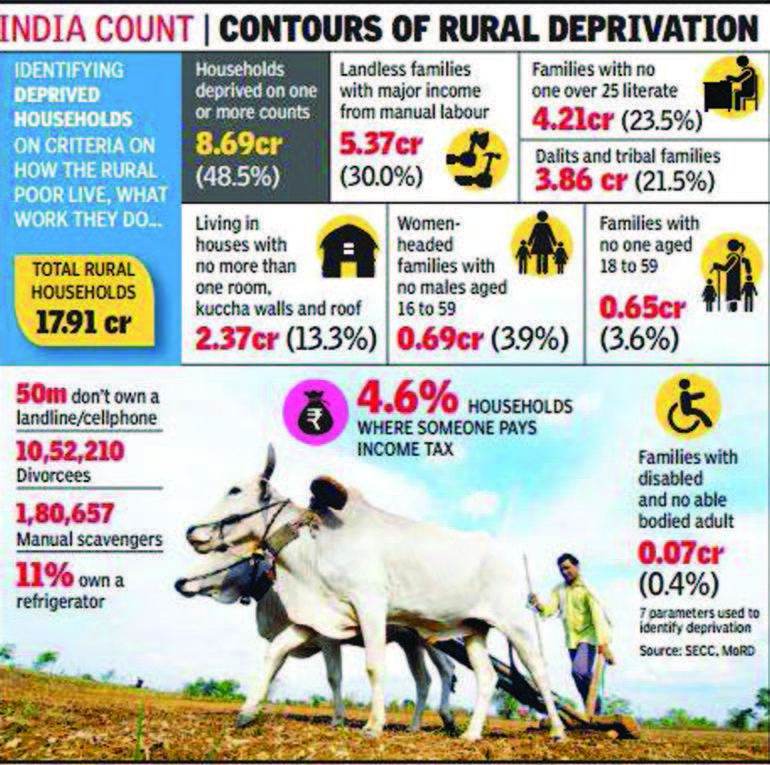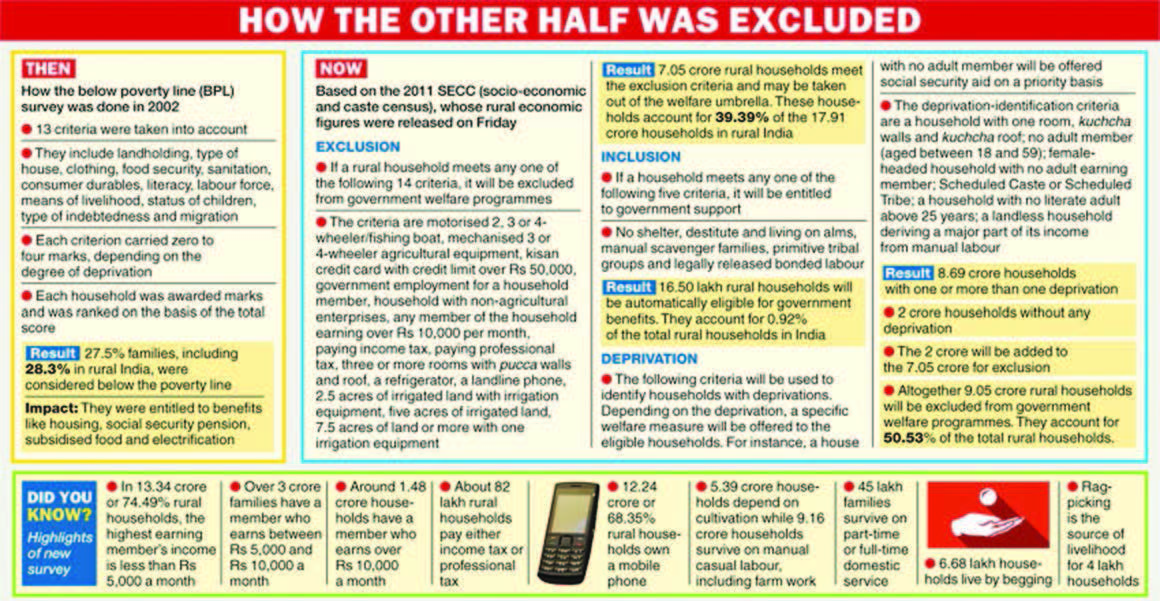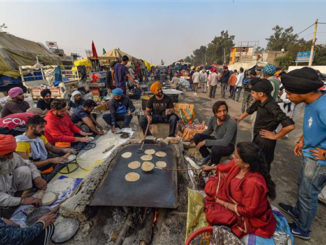
NEW DELHI (TIP): A worrying picture emerged on last week as the government released new data which showed that rural India accounted for 73 per cent households and 74 per cent of these survived on a monthly income of less than Rs 5,000 of its highest earner.
According to the data, 51 per cent of the households are engaged in casual, manual labour and 30 per cent in cultivation. Provisional findings of the Socio Economic Caste Census (SECC) recognise “multidimensional” aspects of poverty and will form the basis for determination of beneficiaries of government schemes in rural areas. Conducted between 2011 and 2013, it will facilitate identification of the poor and deprived in rural areas.
The census covered 24.39 crore households across the country – 17.91 crore are rural households. The highest number of rural households are in Bihar – 90 per cent. The census also showed that 21.53 per cent of rural households belong to the Scheduled Caste/Scheduled Tribes. The contentious caste break-up data was not released. “This is the jurisdiction of the DG Census. It is for him to decide what he thinks about it. This is entirely in the DG’s domain. Only he can comment on it. Only he can satisfy your queries,” Rural Development Minister Birender Singh said while releasing the data with Finance Minister Arun Jaitley. “The name of the report indicates (caste), but caste is not reflected in our data… still the name is Socio Economic and Caste Census,” he said. When the SECC process began in 2011, OBC leaders of parties like the SP, RJD, JD(U) pressed for enumeration of caste on the lines of the 1931 census.
There was division even in the UPA whichwas in power then. Those opposed to it had cautioned that findings of the caste census could lead to new demands for reservation.
According to the SECC data, 31.26 per cent of the total rural households can be broadly identified as “poor”‘ where the main earner has an “insecure and uncertain” source of income and the household lives in a “one room house with kutcha walls and kutcha roof”.
This figure is the Rural Development Ministry’s internal assessment and will not be released officially. Sources said this is because it has been left to states to determine their own poverty ratios using the findings of this census. It is not the mandate of the ministry under this census to determine overall BPL figures, sources said. As many as 74.49 per cent rural households survive on a monthly income of less than Rs 5,000 of its highest earner. The largest number of such households is in Chhattisgarh – over 90 per cent. Five percent of rural households derive salaries from government jobs, 1.11 per cent from public and 3.57 per cent from private sources. Overall, 94 per cent of households own houses, but only 17.70 per cent of SC and 10.50 per cent of ST households have their own houses.
Only 4.58 percent of rural households pay income tax. The findings show 56 per cent households are landless and 70 per cent of SC households fall in this category. In rural households, 38.27 per cent are “landless households deriving major part of their income from manual casual labour”. The highest are in Tamil Nadu (55.80 per cent) and Bihar (54.33 per cent). The largest proportion of households with “destitute/living on alms” is in Orissa. The census distributed rural households into three categories: those that have to be compulsorily excluded; those that have to be compulsorily included; and those that fall in-between, which were then ranked based on seven deprivation criteria.
Information was collected on a range of parameters at the individual and householdlevels like occupation, education, disability, religion, SC/ST status, name of caste/tribe, employment, income and source of income, assets, housing, possession of consumer durables and non-durables and land owned. Those to be automatically included are households without shelter, destitute living on alms, manual scavengers, primitive tribal groups and legally released bonded labourers.
This figure has been pegged at less than 1 per cent. In this, 0.11 per cent of SCs and 0.46 per cent of STs have been automatically included. The automatically excluded constitute 39.4 per cent of the total rural population and include households with any of the following: motorised vehicles, mechanised agricultural equipment, kisan credit card with credit limit of Rs 50,000 and above, households with any member as a government employee, households with non-agricultural enterprises registered with the government, any family member earning more than Rs 10,000 a month, those paying income/professional tax, living in houses with three or more rooms with all having pucca walls and roof, owning a refrigerator, landline phone, possessing irrigated land etc.
Finance Minister Arun Jaitley said, “It’s after seven-eight decades that we have this document after 1932 of the caste census… It’s going to be a very important document for all policy makers both in central and state governments… this document will help us target groups for support in terms of policy planning.”
“It is also a document which contains various details with regard to the specifics of regions, communities, caste groups, economic groups and give us an opportunity to measure the progress which households in India have made. Who are the ones who have qualitatively moved up in terms of quality of life and who are the ones in terms of geographical regions, social groupings which in future planning need to be targeted,” he said.
The ministry’s internal poverty estimate from the census is similar to that of the Rangarajan committee, a technical experts group set up by the UPA government in 2012 after criticism that the poverty line had been pegged much lower than it should have been by the Tendulkar committee. According to the Rangarajan committee, the percentage of people below the poverty line in 2011-12 was 30.95 in rural areas and 26.4 in urban areas as compared to 25.7 and 13.7 respectively as per the Tendulkar methodology.





Recent socio economic caste census revealed prevailing level of poverty in the rural areas.Despite of completion of 65 years of independence still deprivation,poverty are at its highest level.Although this data can be considered useful for formulating more comprehensive policies and target disadvantaged sections.
Caste system is one of the defining feature of India.But it was assumed that industrialization will reduce its impact .But recent survey found that caste has played p
prominent role in choosing occupation.Most of workers belong to SC.s and STs communities.Hence need of the hour is to having close look on our social structure and more focus should be on generating employment opportunities in rural areas.